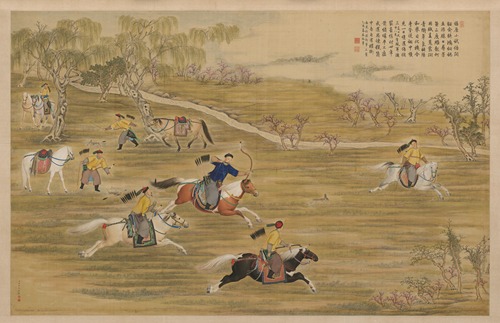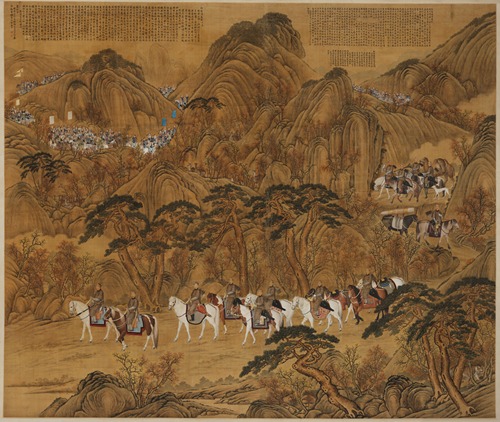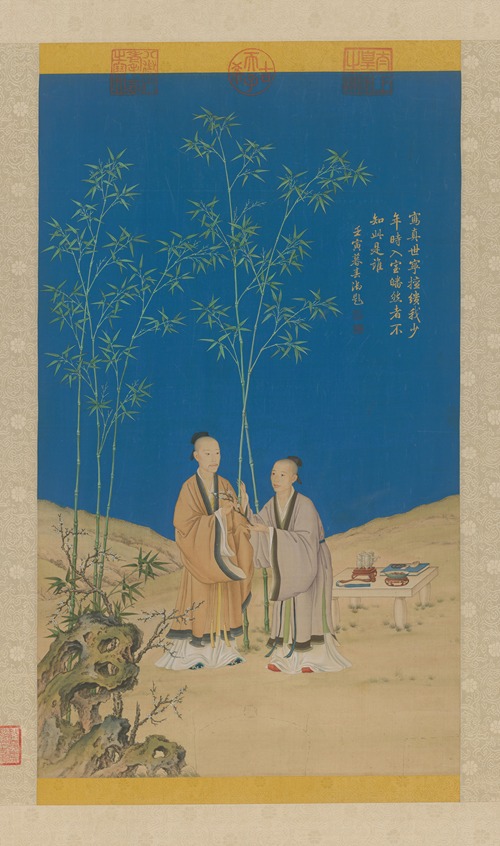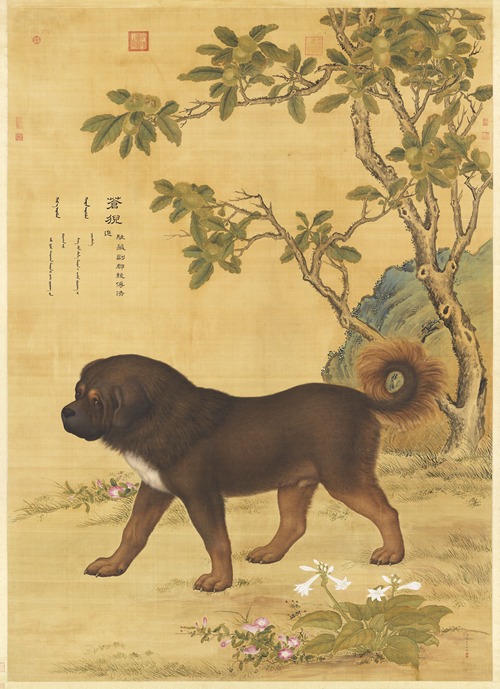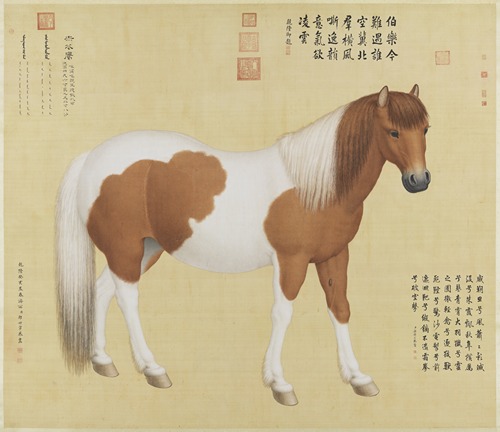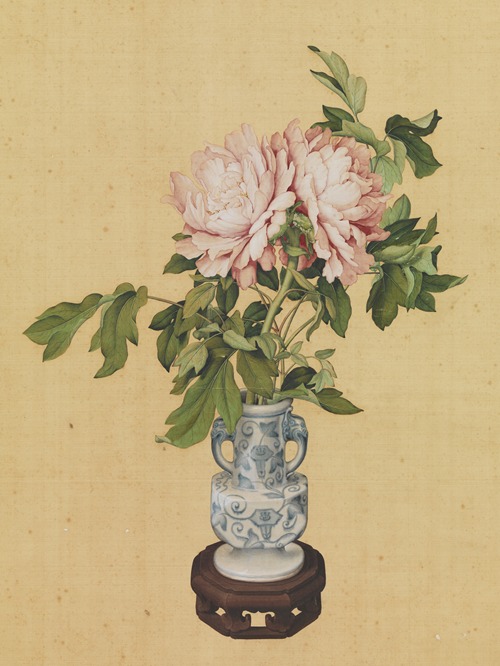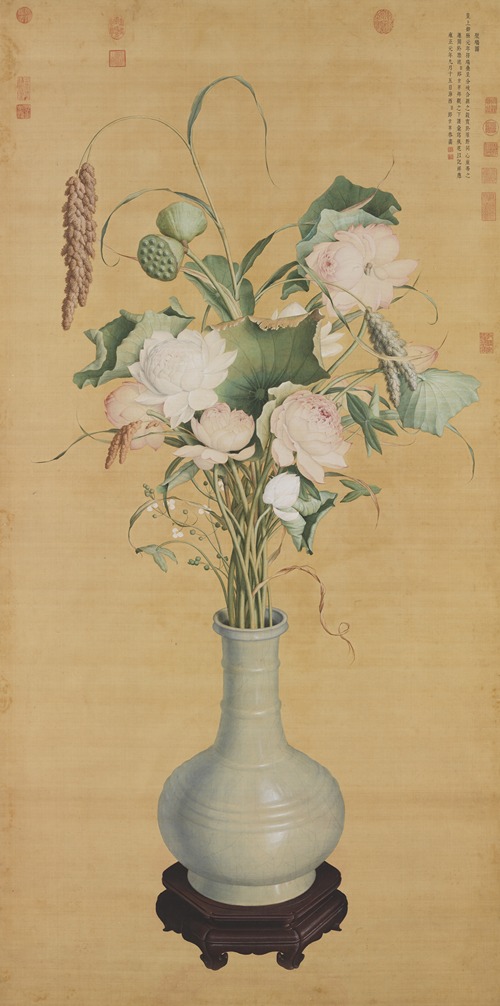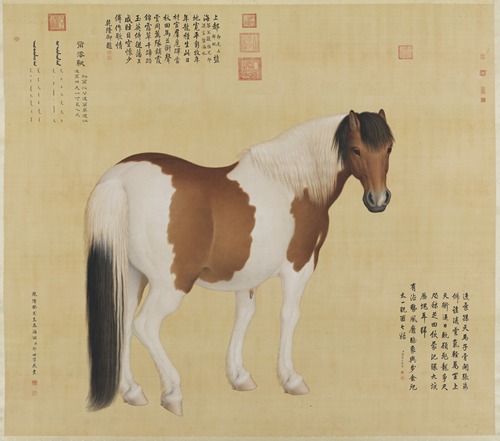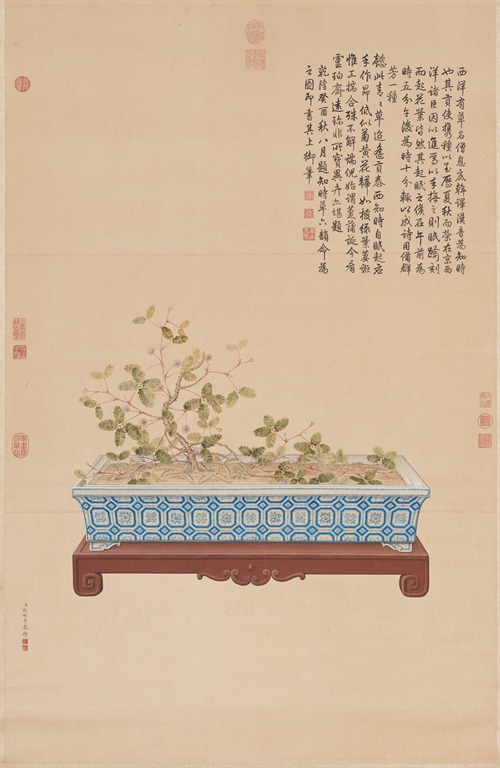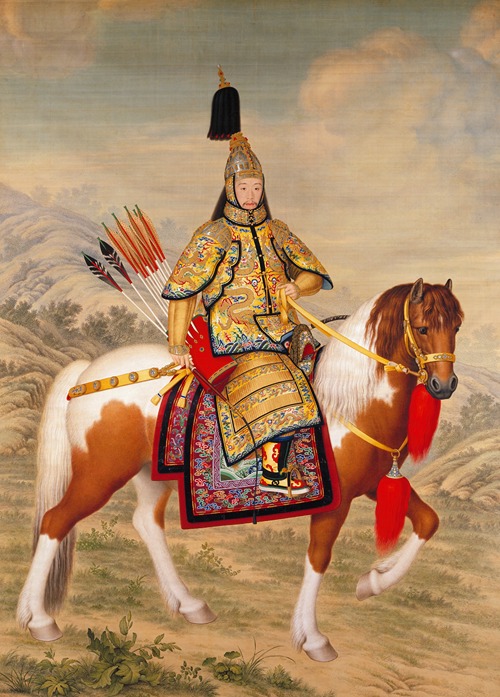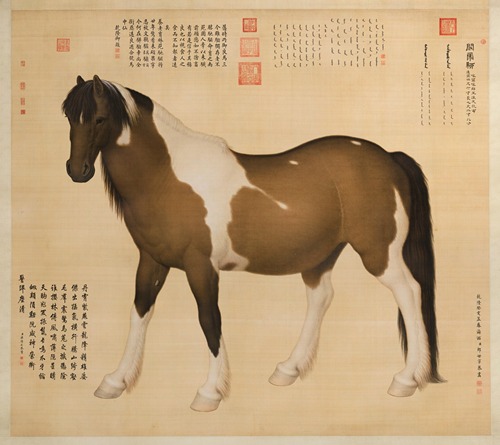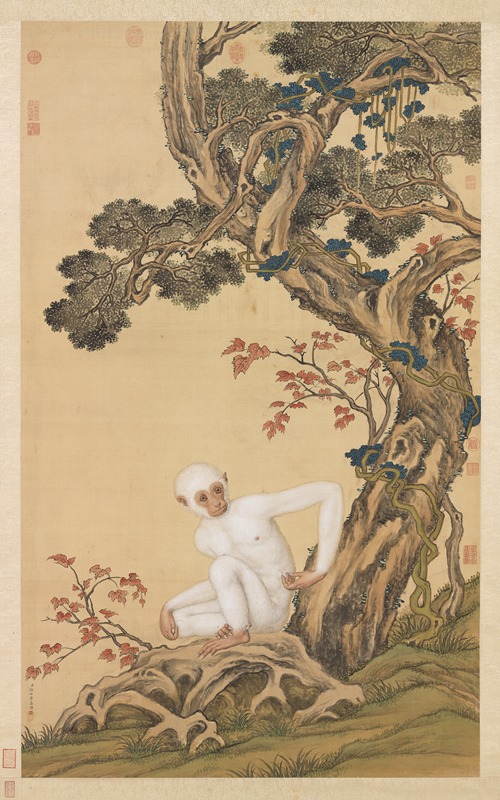
Giuseppe Castiglione was an Italian Jesuit brother and missionary in China, where he served as an artist at the imperial court of three Qing emperors – the Kangxi, Yongzheng and Qianlong emperors. He painted in a style that is a fusion of European and Chinese traditions.
Castiglione was born in Milan's San Marcellino district on 19 July 1688. He was educated at home with a private tutor, then a common practice among wealthy families. He also learned to paint under the guidance of a master. In 1707, he entered the Society of Jesus in Genoa aged 19. Although a Jesuit, he was never ordained as a priest, instead joining as a lay brother.
In the late 17th century, a number of European Jesuit painters served in the Qing court of the Kangxi Emperor who was interested in employing European Jesuits trained in various fields, including painting. In the early 18th century, Jesuits in China made a request for a painter to be sent to the imperial court in Beijing. Castiglione was identified as a promising candidate and he accepted the post. In 1710, on the way to Lisbon, he passed through Coimbra where he stayed for several years to decorate the chapel of St. Francis Borgia in the Church of the novitiate, today the New Cathedral of Coimbra. He painted several panels in the chapel and a Circumcision of Jesus for the main altar of the same church.
In August 1715, Castiglione arrived in Macau, China, and reached Beijing later in the year. He stayed at a Jesuit church called St Joseph Mission or Eastern Hall (Dong Tang) in Chinese. He was presented to the Kangxi Emperor who viewed his painting of a dog, another source said a bird was also painted on the spot on Kangxi's request. However, no painting of Castiglione from the Kangxi period has survived. He was assigned a few disciples, but was placed to work as an artisan in the palace enamelling workshop.
While in China, Castiglione took the name Lang Shining (郎世寧). Castiglione adapted his European painting style to Chinese themes and taste. His earliest extant painting created in such style was from the first year of Yongzheng's reign in 1723. He was permitted to leave the enamel workshop by Yongzheng as it was affecting his eyesight. Although Castiglione was favoured by Yongzheng who commissioned a number of works by him, Yongzheng's reign was a difficult period for the Jesuits as Christianity was suppressed and those missionaries not working for the emperor were expelled.
His skill as an artist was appreciated by the Qianlong Emperor, and Castiglione served the Emperor for three decades and was granted increasingly higher official rank within the Qing court. He spent many years in the court painting various subjects, including the portraits of the emperor and empress. Qianlong showed particular interest in paintings of tribute horses presented to the Emperor on which Castiglione painted a series, such as the Four Afghan Steeds.
In 1765, Castiglione and other Jesuit painters also created a series of "Battle Copper Prints" commissioned by the Emperor to commemorate his military campaigns. Small-scale copies of his paintings were shipped to Paris and rendered into engravings with etching before being returned to China. This series of sixteen prints by Castiglione (who contributed two) and his contemporaries Jean-Denis Attiret, Ignatius Sichelbart and Jean-Damascène Sallusti were created in this way.
Castiglione died in Beijing on 17 July 1766. An obituary was personally penned by Qianlong, who also erected a special stone in Castiglione's memory. He was buried in the Jesuits' Zhalan Cemetery in Beijing.
More Artworks by Giuseppe Castiglione (View all 30 Artworks)
